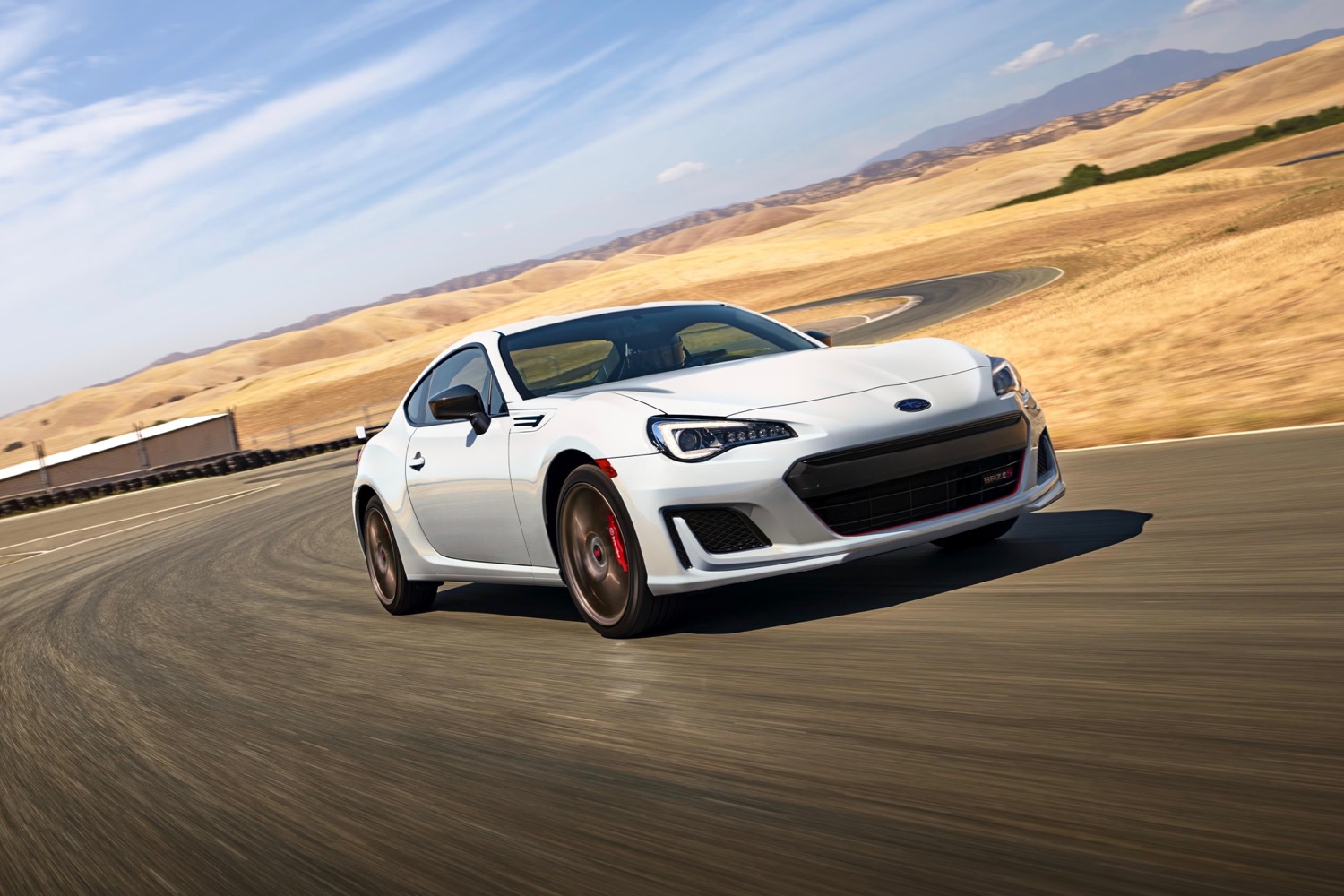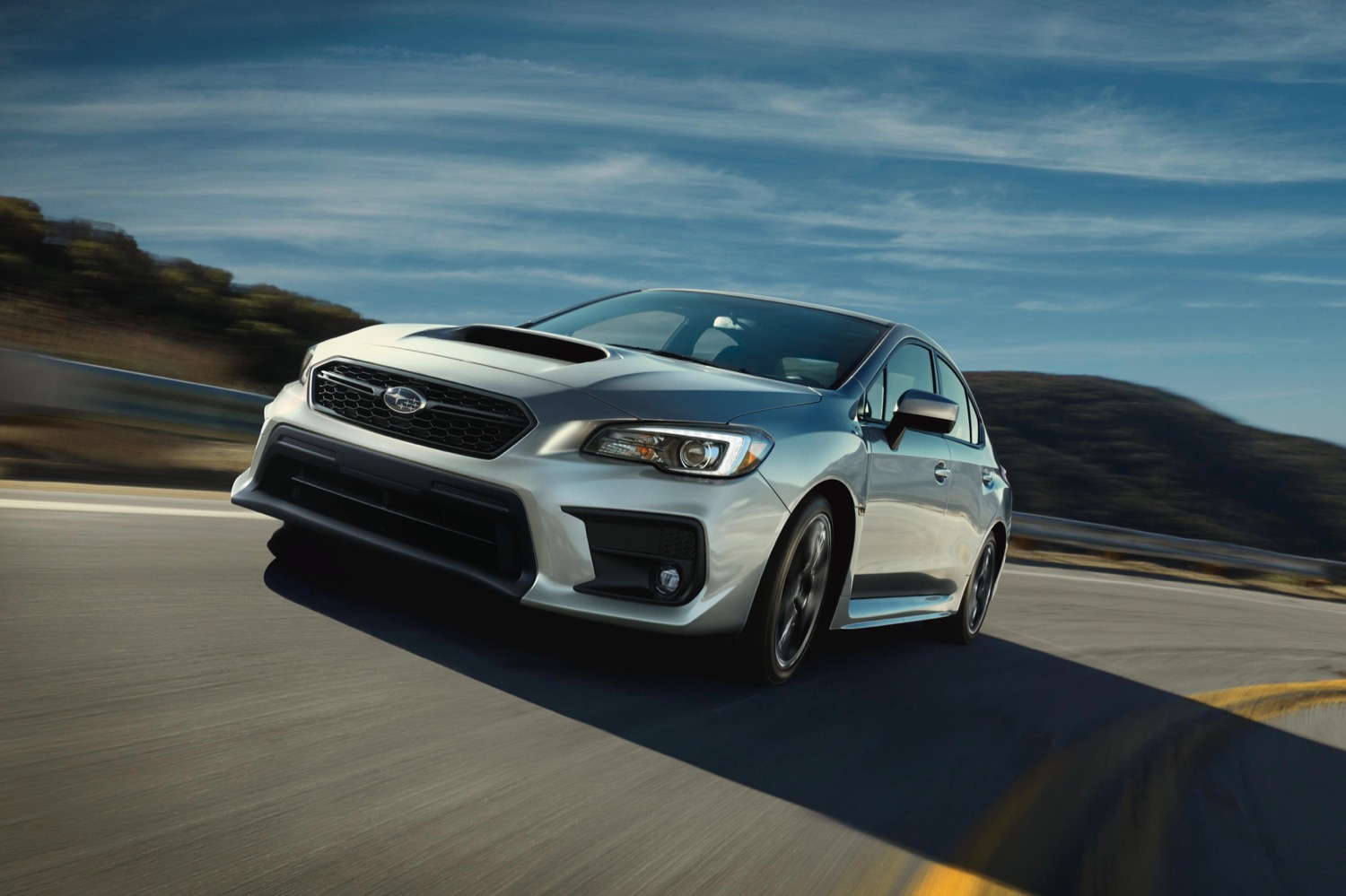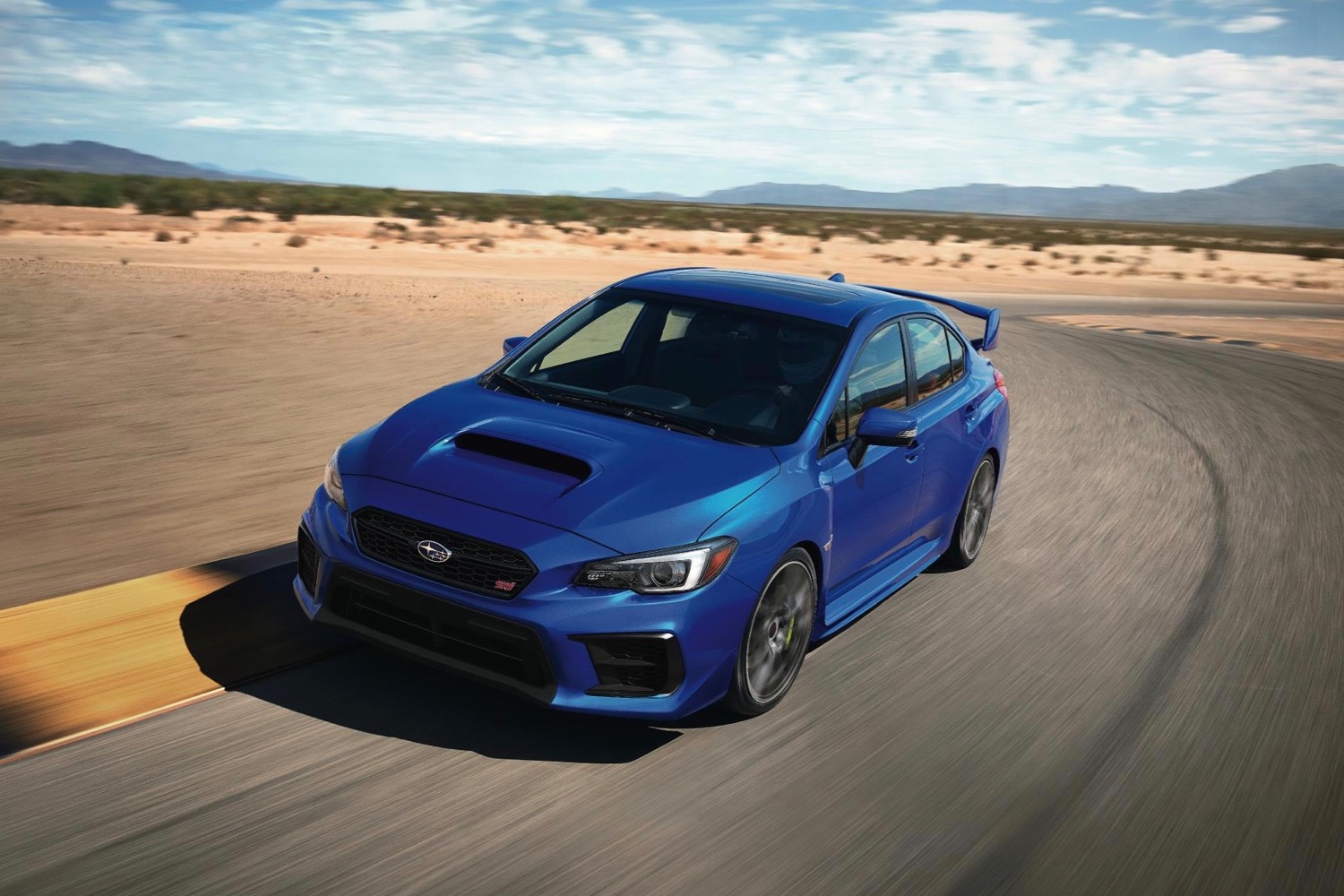Subaru’s performance cars roll into the 2020 model year with minor changes, as well as a minor price bump for the WRX and WRX STI. The big news is the return of the BRZ tS, which was originally a one-year-only limited edition for the 2018 model year (no 2019 model was offered).
The 2020 Subaru BRZ tS is similar to the previous version, but with one major difference. Subaru eliminated the big carbon fiber rear wing, replacing it with a smaller rear spoiler that was likely less expensive. The car itself starts at $1,960 less than the 2018 model, with a base price of $32,395 (all prices include a mandatory destination charge). Production of the 2020 BRZ tS will be limited to 300 units, instead of the 500 built for the 2018 model year.
Aside from the different rear spoiler, the rest of the tS carries over from the 2018 model year. Upgrades include Sachs dampers and springs, an engine V-brace, chassis stiffening, Brembo brakes, and Michelin Pilot Spork tires wrapped around model-specific 18-inch wheels. Subaru didn’t mess with the engine, so the 2.0-liter boxer-four makes the same 205 horsepower and 156 pound-feet of torque as a base BRZ. For 2020, the BRZ tS is only available in Ceramic White (the 2018 model was available in three colors).
The only other BRZ trim level available for 2020 is the Limited, which starts at $29,745 when equipped with the same six-speed manual transmission as the tS. The Limited is also available with a six-speed automatic, which bumps the price up to $30,845, and bumps output down to 200 hp and 151 lb-ft. All BRZ models come standard with Apple CarPlay and Android Auto, and a $1,195 performance package for the Limited adds Brembo brakes, Sachs dampers, and model-specific 17-inch wheels. The rear-wheel drive BRZ remains an outlier in Subaru’s lineup of all-wheel drive vehicles.
The 2020 Subaru WRX starts at $28,395, an increase of $300 over the 2019 model year. The optional performance package now includes a complete Brembo brake upgrade (as opposed to just upgraded pads), while the Recaro front seats and moonroof delete carry over from 2019. The package is now priced at $2,850, up from $2,050 in 2019. It doesn’t involve any changes to the WRX’s turbocharged 2.0-liter boxer-four, which makes 268 hp and 258 lb-ft.
In addition to the base model, Subaru offers higher-level WRX Premium and Limited models, starting at $30,695 and $32,995, respectively. You have to upgrade from the base model to the Premium to get Apple CarPlay and Android Auto. Subaru’s EyeSight driver-assist system is now standard on all WRX models equipped with the optional continuously variable transmission (a six-speed manual is standard).
The WRX STI remains Subaru’s performance flagship. The only changes for 2020 are standard keyless entry with pushbutton start, and modified engine-bay cooling ducts designed to allow better cooling. That doesn’t change the output of the 2.5-liter turbocharged boxer-four, which remains 310 hp and 290 lb-ft. Unlike the standard WRX, the STI is available only with a six-speed manual transmission. Pricing starts at $37,895, which is $400 more than 2019. The 2020 WRX STI Limited starts at $42,595.
While Subaru brought back the BRZ tS for an encore, it made no mention of the WRX STI Type RA introduced alongside the tS in 2018. That model has likely been supplanted by another limited edition — the S209. With 341 hp, the S209 is the most powerful production Subaru ever. It’s also the first “S” series limited-edition model to be sold in the U.S.





